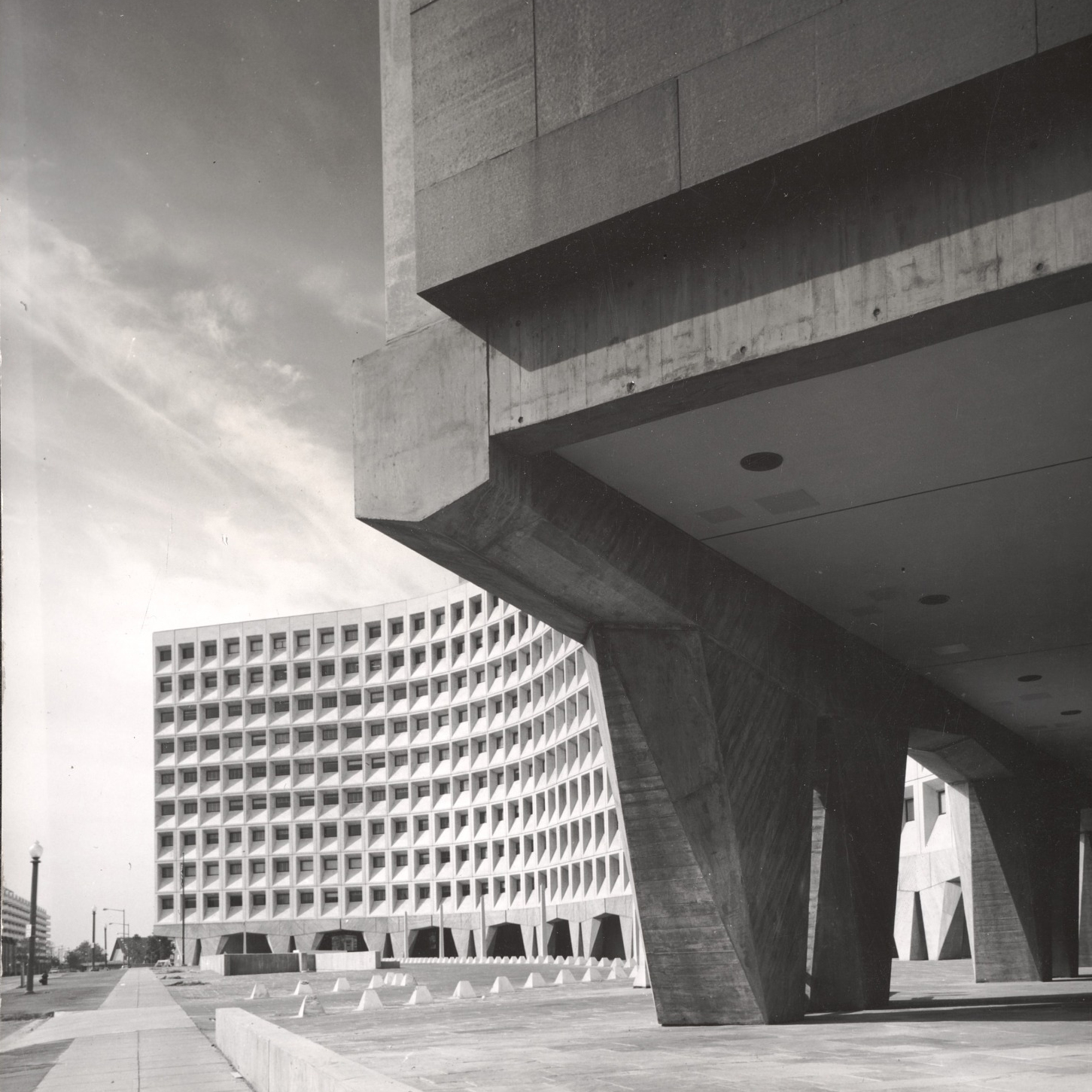American Brutalism
National Building Museum has a new exhibit on DC architecture.

Capital Brutalism is a new exhibition that explores the history, current state, and future of seven polarizing buildings and the WMATA Metro system in Washington, DC. Using archival documents, drawings, architectural models and contemporary photographs, the exhibition explores how the Brutalist phenomenon and these structures first emerged in the U.S. capital during the Cold War.
Designed and constructed with exposed structural elements and building materials such as concrete, brick, steel, and glass, these buildings were cost-effective and efficient, but many haven’t aged well and public reaction continues to debate their architectural significance. Speculative designs from leading architecture firms help reimagine potential futures for some of these buildings.
One notable example is the The Robert C. Weaver Federal Building, located at 451 Seventh Street, SW, Washington, DC. A ten story federal office building designed by architect Marcel Breuer, a master of the modern architectural movement in the United States. The building was constructed for the Department of Housing and Urban Development. The design team for the building included Herbert Beckhard and Nolen Swinburne Associates. The builder was John McShain, Inc., under supervision of the General Services Administration. The cornerstone for the building was laid in November 1966. The building was formally opened and dedicated by Secretary Robert C. Weaver on September 9, 1968, and renamed in his honor July 11, 2000.
Co-organized in collaboration with the Southern Utah Museum of Art (SUMA), Capital Brutalism is the largest-ever survey of Brutalist architecture in Washington, DC and will be on display at the National Building Museum through February 17, 2025.
To celebrate the opening of Capital Brutalism the Museum will remain open until 7:00 pm on Monday, June 3, 2024.




